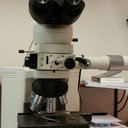Increased hypermethylation of glutathione S-transferase P1, DNA-binding protein inhibitor, death associated protein kinase and paired box protein-5 genes in triple-negative breast cancer Saudi females.
Kulcsszavak
Absztrakt
Triple negative breast cancer (TNBC) is an aggressive subtype of breast cancer (BC) with higher metastatic rate and both local and systemic recurrence compared to non-TNBC. The generation of reactive oxygen species (ROS) secondary to oxidative stress is associated with DNA damage, chromosomal degradation and alterations of both hypermethylation and hypomethylation of DNA. This study concerns differential methylation of promoter regions in specific groups of genes in TNBC and non-TNBC Saudi females in an effort to understand whether epigenetic events might be involved in breast carcinogenesis, and whether they might be used as markers for Saudi BCs. Methylation of glutathione S-transferase P1 (GSTP1), T-cadherin (CDH13), Paired box protein 5 (PAX5), death associated protein kinase (DAPK), twist-related protein (TWIST), DNA-binding protein inhibitor (ID4), High In Normal-1 (HIN-1), cyclin-dependent kinase inhibitor 2A (p16), cyclin D2 and retinoic acid receptor-β (RARβ1) genes was analyzed by methylation specific polymerase chain reaction (MSP) in 200 archival formalin- fixed paraffin embedded BC tissues divided into 3 groups; benign breast tissues (20), TNBC (80) and non-TNBC (100). The relationships between methylation status, and clinical and pathological characteristics of patients and tumors were assessed. Higher frequencies of GSTP1, ID4, TWIST, DAPK, PAX5 and HIN-1 hypermethylation were found in TNBC than in non-TNBC. Hypermethylation of GSTP1, CDH13, ID4, DAPK, HIN-1 and PAX5 increased with tumor grade increasing. Other statistically significant correlations were identified with studied genes. Data from this study suggest that increased hypermethylation of GSTP1, ID4, TWIST, DAPK, PAX5 and HIN-1 genes in TNBC than in non-TNBC can act as useful biomarker for BCs in the Saudi population. The higher frequency of specific hypermethylated genes paralleling tumor grade, size and lymph node involvement suggests contributions to breast cancer initiation and progression.


